How Cognitive-Behavioral Therapy Helps You Understand Your Triggers

Understanding the Power of Cognitive-Behavioral Therapy in Trigger Management
Cognitive-Behavioral Therapy (CBT) is a proven, evidence-based approach that empowers individuals to recognize, understand, and manage their emotional and behavioral triggers. By exploring the intricate connection between thoughts, feelings, and behaviors, CBT provides practical tools for emotional regulation and behavioral change. This article delves into how CBT helps in identifying triggers, addressing trauma, and fostering healthier responses, ultimately improving mental health and everyday functioning.
The Role of Understanding Triggers in Emotional Well-being
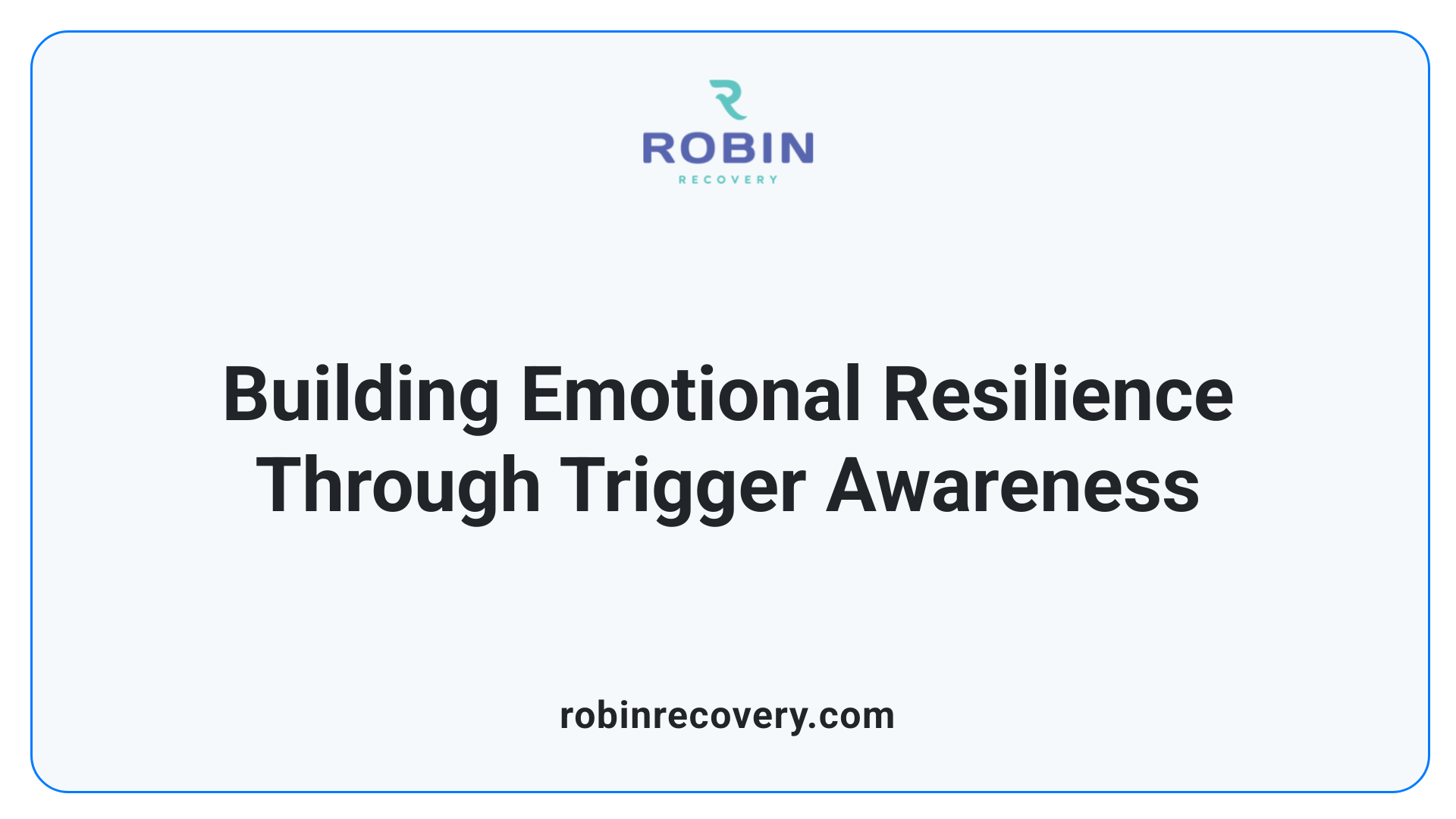
What is a trigger?
Triggers are stimuli—either internal or external—that set off emotional or behavioral responses. They are like cues that activate certain thoughts, feelings, and actions, often leading to unhelpful or undesired behaviors. Recognizing what triggers these reactions is essential for managing emotional health and improving responses.
Internal vs. external triggers
Internal triggers originate from within a person. These can include recurring thoughts, memories, feelings, or bodily sensations that evoke strong emotional reactions. For instance, a memory of a past failure might trigger feelings of shame or anxiety.
External triggers come from the environment or surroundings. Common external triggers include specific situations, people, sounds, smells, or sights. For example, entering a crowded room may provoke social anxiety; hearing a certain sound could remind someone of a traumatic experience.
Examples of common triggers
Understanding specific triggers helps in managing reactions. Here are some typical examples:
Type of Trigger Example Possible Emotional Response External Seeing a conflict between friends Frustration, anger External Facing a high-pressure deadline Anxiety, stress Internal Recurring negative thoughts about oneself Low self-esteem, sadness Internal Remembering a painful event Grief, fear
Recognizing these triggers provides a foundation for better emotional regulation and behavior change.
How does CBT help in recognizing emotional and behavioral triggers?
Cognitive behavioral therapy (CBT) aids individuals in identifying both internal and external triggers by teaching them to observe and monitor their responses. Techniques such as self-observation, reflective journaling, and mindfulness are pivotal.
Through self-observation, clients track situations and feelings that precede emotional reactions. Journaling allows them to record thoughts, patterns, and triggers regularly, making triggers more apparent over time.
Mindfulness practices further enhance awareness by helping individuals stay present and attentive to their internal states. This awareness makes it easier to notice initial reactions before they escalate.
A therapist guides clients to explore automatic thoughts, cognitive distortions, and underlying beliefs linked to triggers. Understanding these connections deepens insight into what fuels specific responses.
Recognizing triggers early on enables clients to develop strategies for managing reactions more effectively. They learn to respond instead of react impulsively, fostering healthier behavior patterns.
Methods and techniques used in CBT to identify and address triggers
Identifying triggers is central to CBT. The following methods are commonly used:
- Self-Observation and Trigger Logs: Clients record daily situations, thoughts, feelings, and responses, helping to pinpoint recurring triggers.
- Reflective Journaling: Writing about emotional experiences and reactions uncovers patterns and links between triggers and responses.
- Mindfulness Practice: Mindfulness enhances awareness of internal states, allowing clients to catch triggers early.
- Cognitive Restructuring: Challenging and modifying negative automatic thoughts related to triggers reduces emotional distress.
- Exposure Therapy: Gradually confronting triggers in a controlled way diminishes sensitivity and avoidance behaviors.
- Grounding Techniques: Methods like deep breathing or 5-4-3-2-1 exercises help manage immediate reactions during triggering moments.
Developing coping strategies
Once triggers are identified, CBT promotes developing practical coping strategies. These include creating what is known as a trigger control plan: a set of long-term strategies and immediate actions to navigate triggers and respond healthily.
This process involves collaboration with a therapist to ensure approaches are personalized. Consistent practice of these skills, along with ongoing professional support, enhances emotional resilience.
Final thought
Understanding what provokes emotional and behavioral reactions is a fundamental step toward self-awareness and emotional regulation. CBT provides structured techniques to recognize, analyze, and modify triggers, empowering individuals to face life’s challenges with healthier responses and improved well-being.
Techniques in CBT for Identifying and Managing Triggers
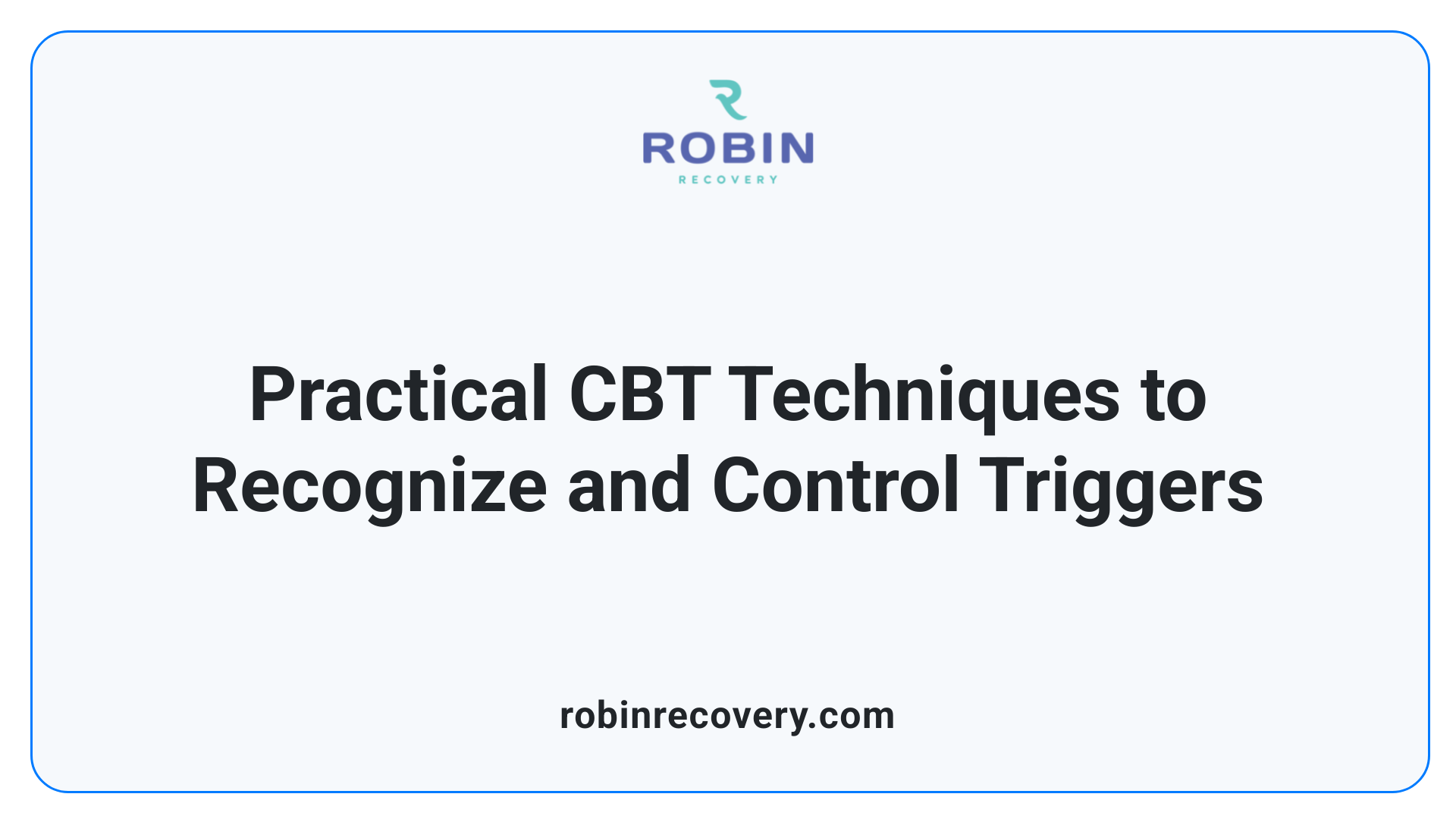
How does cognitive behavioral therapy (CBT) help in recognizing emotional and behavioral triggers?
Cognitive behavioral therapy (CBT) is focused on helping individuals identify what sparks their unwanted emotional or behavioral reactions. It teaches clients to become more aware of internal and external triggers through methods like self-observation, journaling, and mindfulness. These techniques enable clients to notice patterns linking their thoughts, feelings, and actions.
During therapy, clients work with their therapist to explore automatic thoughts, cognitive distortions, and underlying core beliefs that contribute to triggers. By understanding what causes specific responses, individuals gain greater insight into their emotional and behavioral patterns. Recognizing triggers early helps them develop strategies to respond more helpfully, ultimately reducing the frequency and intensity of unhelpful reactions.
Overall, CBT equips people with practical skills to detect triggers promptly, manage emotional surges, and modify unhelpful thinking and behaviors. This proactive approach supports emotional regulation and fosters stronger self-awareness.
What are the core principles and methods used in CBT to identify and address triggers?
In CBT, the main approach for identifying triggers involves active techniques such as self-observation, reflective journaling, and mindfulness practices. These strategies increase awareness of situations and thoughts that provoke emotional or behavioral responses.
A common method is maintaining trigger logs, where clients record details about their reactions, the context, thoughts, and feelings associated with specific triggers. Over time, these logs reveal patterns and help pinpoint frequent or intense triggers.
Therapists also employ cognitive restructuring, which involves examining and challenging distorted or unhelpful thoughts linked to triggers. By changing these thoughts, clients can alter their emotional reactions.
Another essential technique is exposure therapy, where clients gradually confront feared stimuli or situations to weaken the emotional response associated with them. Grounding techniques such as deep breathing, progressive muscle relaxation, and mindfulness exercises serve as immediate coping tools during moments of distress.
This combination of monitoring, understanding, and systematically addressing triggers allows individuals to develop healthier responses and reduce avoidance behaviors, promoting overall emotional well-being.
What techniques are frequently used in CBT to cope with and reframe emotional responses to triggers?
CBT offers several effective methods to help clients cope with triggers and reshape their emotional responses. Cognitive restructuring is central; it involves identifying negative or distorted thoughts related to triggers and replacing them with more balanced, realistic perspectives.
Exposure therapy is another powerful tool, where individuals are gradually and safely exposed to their triggers. This process helps reduce sensitivity and build tolerance, decreasing fear and avoidance over time.
Grounding techniques, such as the 5-4-3-2-1 method, deep breathing exercises, and progressive muscle relaxation, help clients stay present during intense emotional episodes triggered by certain stimuli. These methods promote calmness and help prevent escalation.
Behavioral experiments and planned responses enable clients to test new reaction patterns in real-life situations. Successfully managing a trigger with a healthier response reinforces confidence and emotional control.
Together, these techniques empower individuals to face triggers directly, reframe negative thoughts, and develop adaptive coping skills, promoting long-term emotional resilience.
Benefits of CBT in Emotional and Behavioral Regulation
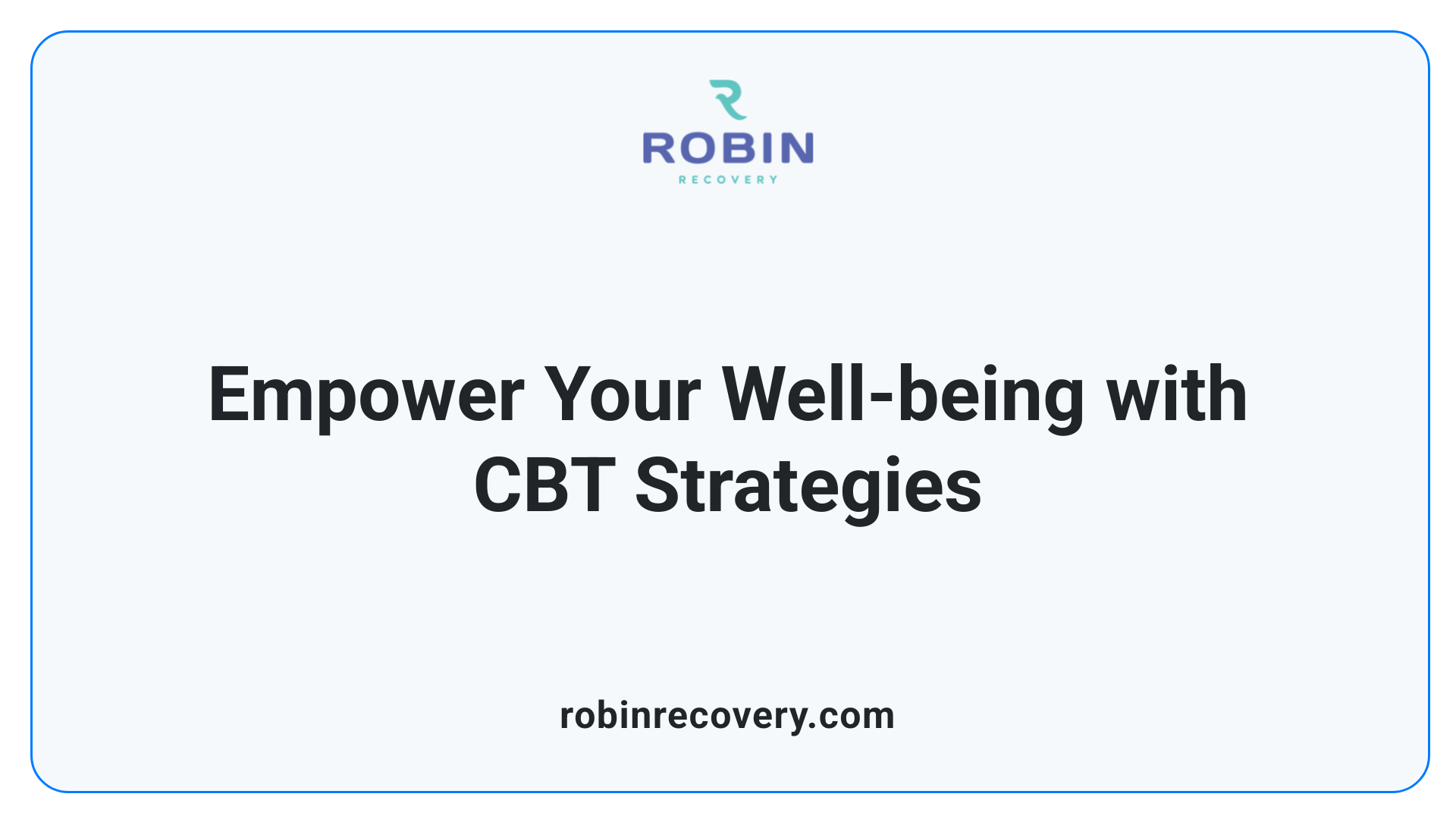
How does CBT help in managing triggers linked to mental health?
Cognitive Behavioral Therapy (CBT) offers numerous advantages for individuals dealing with emotional and behavioral triggers. One of its primary benefits is enhancing self-awareness. By learning to recognize internal and external stimuli that provoke emotional reactions, individuals can better understand what sets off their distress. This insight is foundational to managing triggers effectively.
CBT also equips clients with practical tools such as cognitive restructuring, which involves challenging and reframing negative thoughts. Mindfulness and relaxation techniques are used to help individuals stay present and calm when faced with triggers. These strategies reduce the intensity of emotional responses and prevent escalation into unhelpful behaviors.
A structured approach that targets core beliefs and automatic thoughts helps break negative thought patterns. As a result, individuals can develop healthier responses and establish more adaptive thought-behavior cycles. This process not only manages existing symptoms but also builds resilience against future stressors.
The problem-solving skills cultivated during CBT sessions are especially valuable. Clients learn to develop coping mechanisms, plan responses to triggers, and prevent relapse. Over time, these skills lead to improved emotional regulation, reduced anxiety, and better overall mental health.
Long-term outcomes of utilizing CBT include sustained symptom reduction and enhanced quality of life. By understanding their triggers and how to respond to them, individuals gain confidence in managing their mental health independently. Overall, CBT empowers people to face their emotional challenges with practical strategies, fostering stability and resilience.
CBT’s Approach to Trauma and Emotional Responses
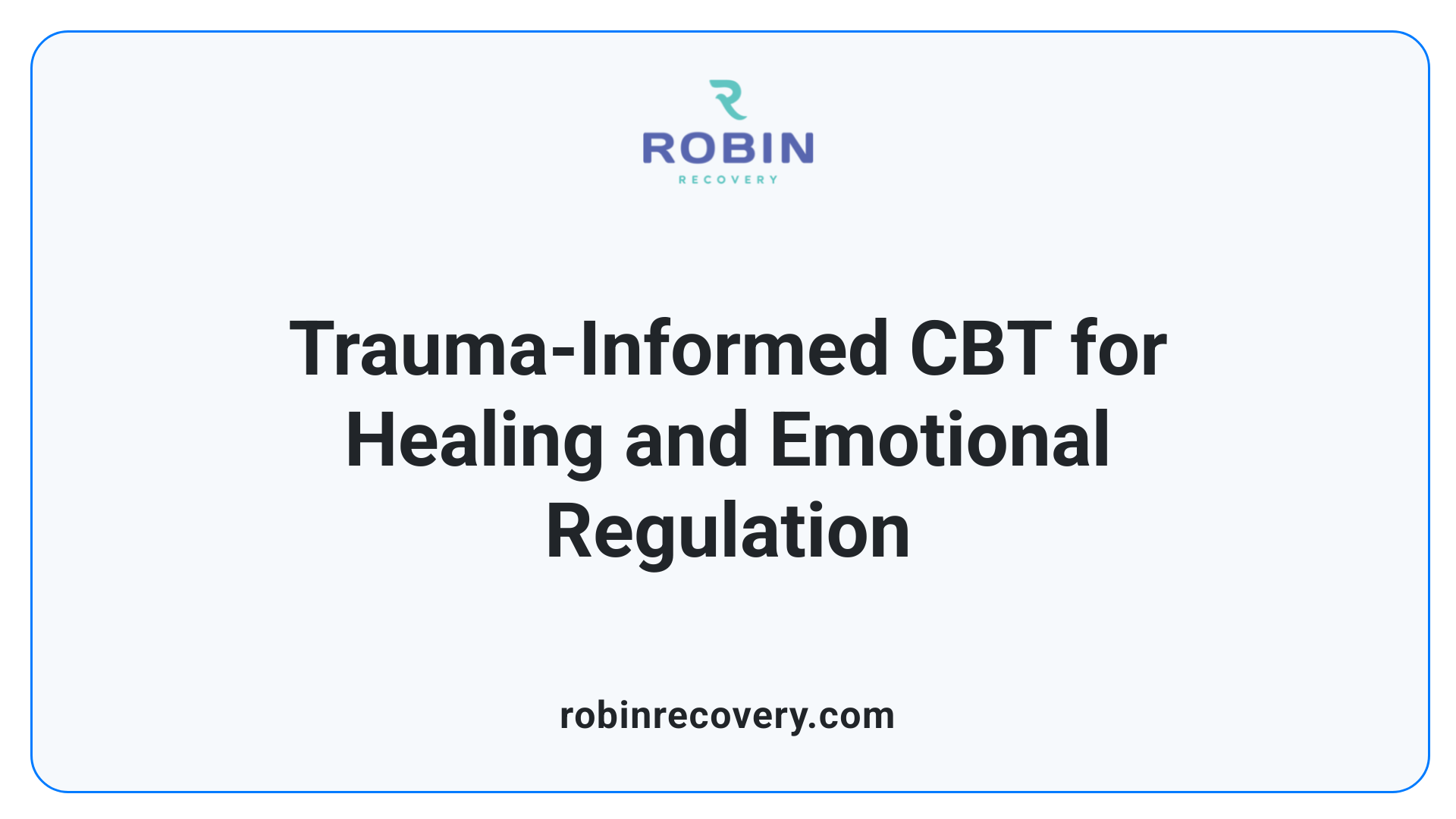
How does CBT address trauma and emotional responses related to triggers?
Cognitive Behavioral Therapy (CBT) plays a vital role in managing trauma and emotional responses triggered by specific stimuli. A fundamental step in CBT involves helping individuals recognize their trauma triggers—sensory cues such as sights, sounds, or even internal thoughts that evoke painful memories or strong emotional reactions.
Once these triggers are identified, therapists assist clients in understanding how these cues set off automatic negative thoughts and emotional patterns. Techniques like cognitive restructuring are employed to challenge and change distorted beliefs related to trauma, such as feelings of helplessness or guilt. This process helps individuals develop more balanced and realistic perspectives, reducing emotional distress.
Exposure therapy is another cornerstone method in which clients gradually confront trauma-related triggers in a controlled and safe environment. This gradual exposure diminishes the emotional power of triggers over time, leading to decreased sensitivity and avoidance.
Supporting these approaches are grounding techniques—such as deep breathing, mindfulness exercises, and sensory awareness—that help individuals stay present during intense reactions. Additionally, maintaining a trigger log enables clients to track responses and discover patterns, which informs personalized coping strategies.
Trauma-informed therapists guide clients through sensitive processing of traumatic memories and help develop comprehensive trigger management plans. These plans include strategies for immediate responses and long-term resilience building, empowering individuals to handle emotional surges more effectively and foster emotional regulation.
What are the essential principles and clinical methods used in CBT for managing trauma-related triggers?
The effectiveness of CBT for trauma-related triggers hinges on certain core principles. These include recognizing the strong connection between thoughts, feelings, and behaviors, and understanding how traumatic triggers activate maladaptive reactions.
Clinicians utilize various techniques within this framework:
Technique Purpose How It Works Additional Details Cognitive Restructuring Challenge distorted beliefs Identifies negative automatic thoughts linked to trauma and reframes them into healthier perspectives Helps reduce feelings of shame, guilt, or helplessness Exposure Therapy Confront triggers gradually Clients are systematically exposed to cues or memories associated with trauma, either in imagination or real life Uses safety and pacing to reduce emotional reactivity Grounding Exercises Stay present Techniques like deep breathing, sensory awareness, and mindfulness help anchor attention to the present moment Essential during emotional surges or flashbacks Trigger Management Planning Prepare effective responses Creating personalized plans that include coping strategies, safety behaviors, and relaxation methods Enhances resilience and self-efficacy
Trauma-informed CBT emphasizes safety, trust, and gradual progress. Therapists incorporate psychoeducation about trauma responses, develop coping skills through exercises, and create a supportive environment to facilitate recovery.
This structured approach enables clients not only to reduce fear and avoidance related to trauma triggers but also to improve their overall emotional regulation and restore a sense of control over their lives.
Clinical Applications and Principles of CBT in Trigger Prevention
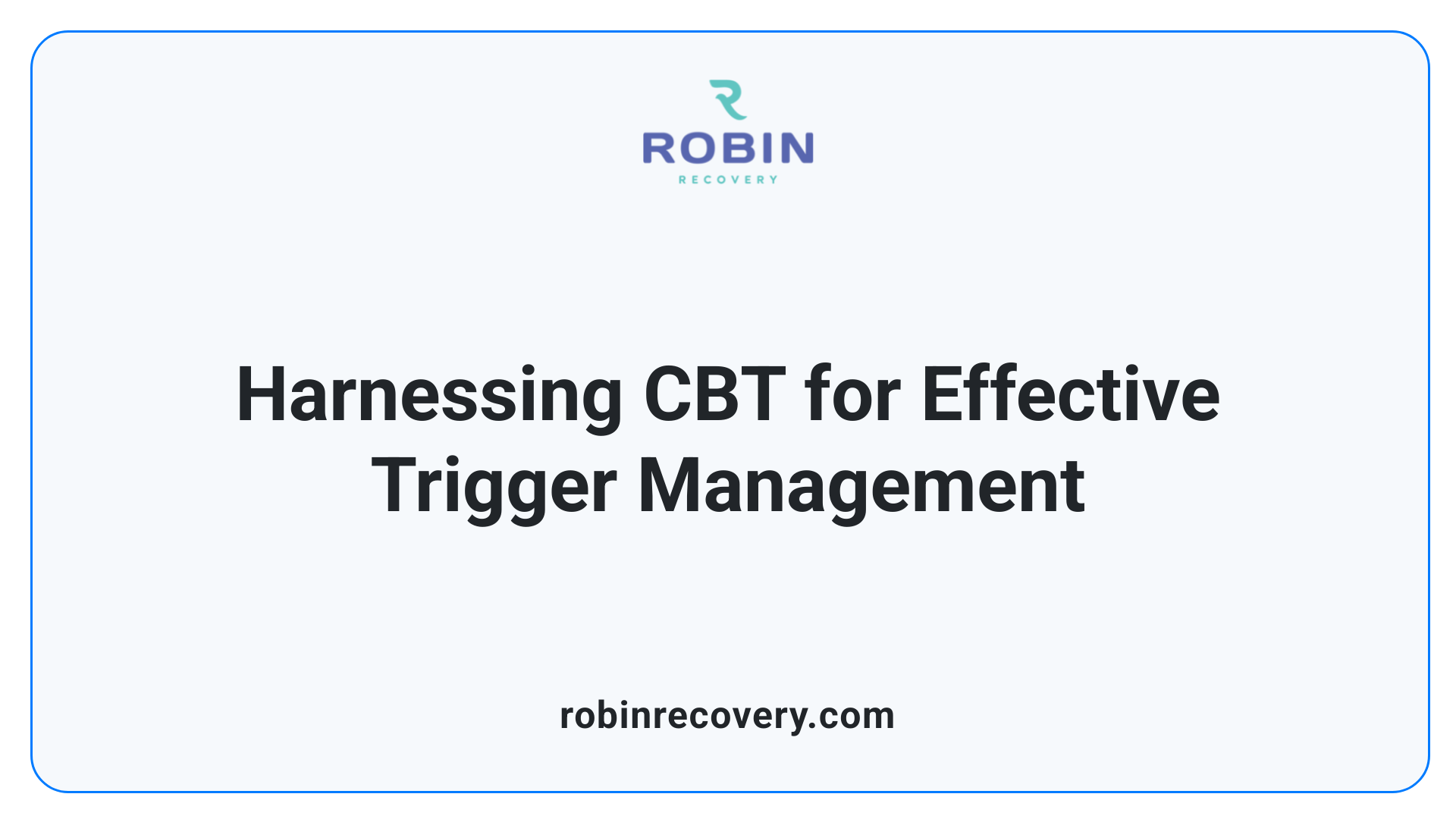
What are the fundamental principles and clinical applications of CBT in trigger management?
Cognitive Behavioral Therapy (CBT) is built upon the understanding that many emotional and behavioral issues originate from faulty or unhelpful thought patterns, along with learned behaviors and deep-seated beliefs. These core ideas form the basis for how CBT helps individuals manage triggers and related reactions.
One of the central notions in CBT is that negative thoughts and cognitive distortions—such as catastrophizing or overgeneralization—can activate emotional responses like anxiety or fear. Recognizing these automatic thoughts is a crucial step in the therapy process.
Clinically, CBT involves a variety of structured techniques aimed at changing these thought patterns and behaviors. Cognitive restructuring, for example, helps individuals identify distorted or negative thought patterns and replace them with healthier, more realistic perspectives.
Behavioral strategies are equally important. Exposure therapy, for example, gradually and safely confronts triggers to weaken their emotional impact over time. Behavioral activation encourages engaging in positive activities that counteract feelings of depression or anxiety.
Relaxation techniques such as deep breathing or progressive muscle relaxation are often used to manage physical symptoms linked to emotional triggers.
In practice, therapy sessions focus on helping individuals become aware of triggers—whether internal, like thoughts or feelings, or external, like specific situations or people—and understand the emotional and behavioral responses these triggers evoke.
Therapists guide clients through exercises that foster self-awareness, such as keeping trigger logs to track responses and identify patterns.
This systematic approach enables clients to develop effective coping skills: facing fears rather than avoiding them, reframing negative thoughts, and gradually reducing their emotional power.
CBT is applicable across a broad spectrum of mental health conditions, including anxiety disorders, depression, PTSD, and phobias. Its evidence-based foundation and adaptable nature make it a preferred treatment for trigger management.
Furthermore, the goal-oriented style of CBT emphasizes practical solutions, empowering clients to become their own therapists through homework assignments, mindfulness practices, and self-help strategies.
By consistently applying these principles and techniques, individuals can better understand their triggers, respond constructively, and improve overall emotional regulation and resilience.
Research consistently shows that CBT leads to significant improvements in functioning and quality of life by helping clients manage their triggers effectively and reduce associated distress.
In summary, CBT’s core principles—recognizing faulty thinking, confronting triggers safely, and cultivating healthier responses—are essential for effective trigger management in mental health treatment.
Empowering Self-awareness and Resilience
Cognitive-Behavioral Therapy stands as a vital tool in understanding and managing emotional and behavioral triggers. By teaching individuals to recognize their triggers, challenge distorted thoughts, and employ effective coping strategies, CBT fosters emotional resilience and healthier behavioral responses. Its structured, evidence-based techniques provide a clear pathway toward self-awareness and long-term mental health improvement. Whether through behavioral experiments, cognitive restructuring, or grounding exercises, CBT equips clients with lifelong skills to navigate emotional challenges, ultimately leading to increased well-being, control, and a more positive outlook on life's stressors.
References
- Noticing Triggers: The First Step to Behavioral Change in ...
- Overcome Your Triggers With Cognitive Behavioral Therapy
- Cognitive Behavioral Therapy (CBT): What It Is & Techniques
- Understanding Triggers in CBT – Kenosha, WI
- What is Cognitive Behavioral Therapy?
- How CBT Helps Positively Transform Thinking, Emotions ...
- Cognitive Behavior Therapy - StatPearls
- CBT Techniques for Managing Trauma Triggers
